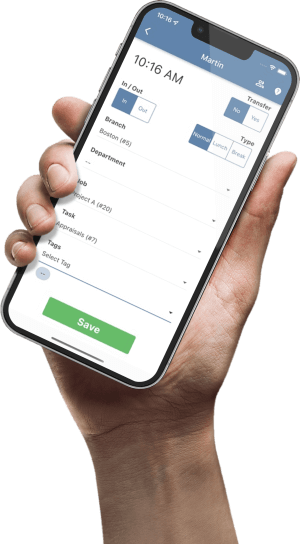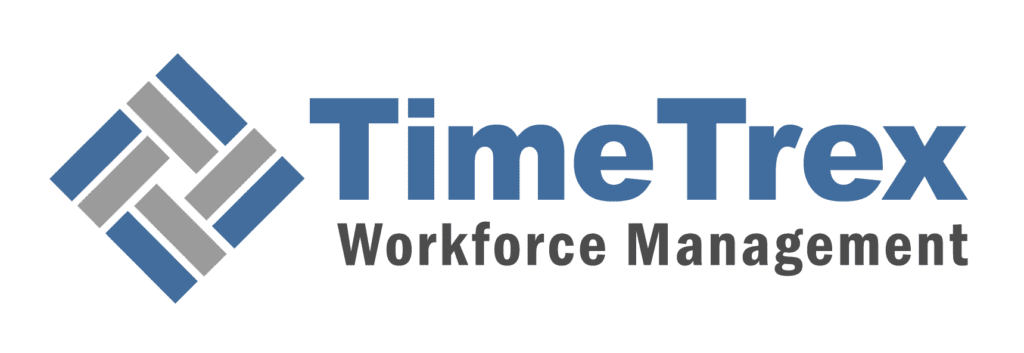Interactive Retirement Savings Calculator

Retirement Savings Calculator
| Age | Year | Projected Savings ($) | Adjusted Expenses ($) |
|---|
Found our Free Retirement Savings Calculator useful? Bookmark and share it.

Retirement Savings in the United States
Ensuring financial security in later life is a cornerstone of individual well-being and contributes significantly to the overall economic health of the United States. Retirement savings represent the second-largest source of household wealth, underscoring their critical role. However, the landscape of retirement funding has undergone a profound transformation over recent decades, shifting from employer-funded Defined Benefit pension plans, which guaranteed a specific income stream for life, towards Defined Contribution plans, such as 401(k)s, where individuals bear the responsibility for accumulating sufficient funds and managing investment risk.
Despite the importance of retirement savings, significant concerns persist regarding the preparedness of the US population. Only 31% of non-retirees felt their retirement savings were on track in 2022, down from 40% in 2021. Growing numbers of retirees report that their spending exceeds what they can comfortably afford, a situation exacerbated by inflationary pressures and rising debt. Half of retirees surveyed in 2024 felt they had saved less than needed for retirement. These statistics paint a picture of widespread retirement insecurity and highlight the challenges inherent in the current system.
Report Purpose & Scope: This article provides a comprehensive analysis of the US retirement savings landscape, tracing the evolution from Defined Benefit to Defined Contribution plans, detailing account types (pensions, 401(k)s, 403(b)s, IRAs), summarizing the governing rules (contribution limits, eligibility, vesting, withdrawal regulations), presenting statistical snapshots of savings balances and participation, assessing the role of Social Security, outlining effective savings strategies, identifying barriers to adequate savings, evaluating the impact of the SECURE Acts, and highlighting resources to aid retirement planning.
The Architecture of US Retirement Savings: A System in Transition
The Historical Shift: From Defined Benefit to Defined Contribution
For much of the mid-to-late 20th century, employer-sponsored Defined Benefit (DB) pension plans dominated, promising a specific, predictable retirement income based on factors like final salary and years of service. Beginning in the late 1970s, employers steadily replaced DB plans with Defined Contribution (DC) plans—most notably 401(k)s—due to rising costs, funding volatility, and regulatory complexities. Between 1992 and 2022, the share of families with only a DB plan fell from 40% to 15.6%, while the share with only a DC plan rose from 37.5% to 63.9%. This shift transferred investment, inflation, and longevity risks from employers to individual workers, demanding greater financial sophistication from savers.
Defined Benefit (DB) Plans: Structure and Guarantees
DB plans guarantee a lifetime benefit, typically calculated via a formula incorporating final average salary, years of service, and an accrual rate (e.g., 1.5% per year). Cash balance plans—a DB variation—credit participants with hypothetical accounts that grow with pay and interest credits, while employers retain investment risk. Most private-sector DB plans carry insurance from the Pension Benefit Guaranty Corporation (PBGC), which ensures vested benefits up to statutory limits. In 2025, PBGC insured plans covering approximately 31 million people, with a maximum guaranteed monthly benefit of $7,431.82 for a 65-year-old retiree.
Defined Contribution (DC) Plans and IRAs
DC plans, now the private-sector standard, feature individual accounts funded by employee deferrals (pre-tax or Roth) and often by employer matches. Key DC plan types include:
- 401(k) Plans: Pre-tax or Roth deferrals, employer matching, and a range of investment options. Variations like SIMPLE and Safe Harbor plans ease nondiscrimination testing through mandatory contributions and faster vesting.
- 403(b) Plans: Available to public school and 501(c)(3) employees, featuring elective deferrals and often limited investment options. Subject to universal availability rules and special catch-up provisions for long-tenured employees.
- Other DC Plans: Profit-sharing, ESOPs, money purchase plans, governmental 457(b) plans, SEP IRAs, and SIMPLE IRAs—each with unique contribution sources and rules.
Individual Retirement Arrangements (IRAs) provide personal tax-advantaged savings, with Traditional IRAs offering tax-deductible contributions and Roth IRAs enabling tax-free qualified withdrawals. SEP and SIMPLE IRAs simplify retirement savings for small employers and self-employed individuals.
| Feature | Traditional Pension (DB) | Cash Balance Plan (DB) | 401(k) Plan (DC) | 403(b) Plan (DC) | Traditional/Roth IRA |
|---|---|---|---|---|---|
| Who Offers/Eligible For | Private/Public Employers | Private/Public Employers | Private For-Profit Employers | Public Schools, 501(c)(3) | Individuals w/ Earned Income |
| Contribution Source | Employer Only | Employer Only | Employee/Employer | Employee/Employer | Individual |
| Investment Risk Bearer | Employer | Employer | Employee | Employee | Employee |
| Tax: Contributions | N/A | N/A | Pre-tax or Roth | Pre-tax or Roth | Deductible/After-tax |
| Withdrawal Tax | Taxable | Taxable | Taxable/Tax-free (Roth) | Taxable/Tax-free (Roth) | Taxable/Tax-free (Roth) |
Navigating the Rules: Contributions, Eligibility, and Vesting
2025 Contribution Limits and Tax Treatments
The IRS sets annual contribution limits for retirement accounts. For 2025:
- 401(k)/403(b)/457(b)/TSP Deferral Limit: $23,500 (under 50).
- Standard Catch-Up (50+): $7,500; Super Catch-Up (60–63): $11,250 if adopted by plan.
- IRA Limit: $7,000; Catch-Up: $1,000.
- SIMPLE Plan Deferral: $16,500; Catch-Up: $3,500; Enhanced Catch-Up (60–63): $5,250.
- SEP IRA: Lesser of 25% comp or $70,000.
- Overall DC Plan Limit (415(c)): Lesser of 100% comp or $70,000 (excludes catch-ups).
| Plan Type | Employee Deferral (<50) | Age 50+ Catch-Up | Age 60-63 Catch-Up | Total Limit (50–59, 64+) | Total Limit (60–63) |
|---|---|---|---|---|---|
| 401(k)/403(b)/457(b)/TSP | $23,500 | $7,500 | $11,250¹ | $31,000 | $34,750¹ |
| Traditional/Roth IRA | $7,000 | $1,000 | N/A | $8,000 | $8,000 |
| SIMPLE IRA/401(k) | $16,500 | $3,500 | $5,250¹ | $20,000 | $21,750¹ |
| SEP IRA | N/A | N/A | N/A | Employer: ≤25% comp or $70,000 | Employer: ≤25% comp or $70,000 |
¹ Super catch-up effective January 1, 2025, if adopted by the plan.
Eligibility Criteria and Vesting Schedules
ERISA mandates participants be allowed to defer after age 21 and one year of service, though employer matching contributions can vest following either a three-year cliff or six-year graded schedule. SECURE Act enhancements require 401(k)/403(b) plans to cover long-term part-time employees (500+ hrs/year) after two years of service.
Early Withdrawal Penalties and Exceptions
Distributions before age 59½ incur a 10% penalty (25% for SIMPLE IRAs within first two years), with exceptions for disability, first-time home purchase, qualified medical expenses, IRS levies, birth/adoption, disaster relief, and more. Roth IRA contributions can be withdrawn penalty-free at any time.
The Social Security Safety Net: Current Status and Future Outlook
Role in Overall Retirement Income
Social Security provides foundational lifetime income, replacing about half of pre-retirement earnings for 80% of beneficiaries. For many, especially lower-income, rural, female, and minority retirees, it is the primary income source.
For more information, visit the Social Security Retirement Information.
Solvency Projections and Ongoing Debates
OASI reserves are projected to deplete in 2033, leading to automatic benefit reductions of ~17–23% under current law. Reform options include adjusting the retirement age, modifying the benefit formula, increasing payroll taxes, or raising the earnings cap.
| Trust Fund | Projected Depletion (SSA) | Projected Depletion (CBO) | % Benefits Payable After Depletion |
|---|---|---|---|
| OASI | 2033 | 2033 | ~79% (SSA) |
| DI | Not Depleted | 2064 | 100% |
| Combined OASDI | 2035 | 2034 | ~83% (SSA) |
Strategies for Building Retirement Wealth
Optimizing Contributions: Savings Rates and Prioritization
Experts recommend saving at least 15% of pre-tax income, including employer matches. A common “waterfall” strategy prioritizes: 1) 401(k)/403(b) match, 2) HSA contributions, 3) IRA contributions, 4) maxing workplace plan deferrals, and 5) additional savings through taxable accounts. Low-to-moderate earners may qualify for Saver’s Credit (replaced by federal matching in 2027).
Investment Allocation Principles
Asset allocation across stocks, bonds, and cash based on risk tolerance and time horizon drives long-term returns. Diversification, regular rebalancing, and low-cost funds help manage volatility, fees, inflation risk, and longevity concerns.
The Role of Target-Date Funds
Target-date funds automate diversification and de-risking via a glide path tied to retirement year. While convenient defaults in many DC plans, their one-size-fits-all nature and varying glide paths warrant careful selection.
Identifying the Hurdles: Challenges to Retirement Savings
The Access Gap
About 30% of private-industry workers lack workplace plan access, especially at small firms, forcing reliance on IRAs with higher barriers and fees.
The Burden of Debt
Rising student loan and consumer debt limit savings capacity and drive retirees to tap retirement accounts for emergencies.
Financial Literacy and System Complexity
Complex rules and investment options require financial knowledge many lack, leading to suboptimal participation and allocation decisions.
Plan Leakage and Emergency Savings Deficits
Pre-retirement withdrawals erode balances, often due to inadequate emergency savings. SECURE 2.0’s pension-linked emergency accounts aim to address this root cause.
Policy Interventions: The Impact of the SECURE Acts
Overview of SECURE Act 1.0
Enacted 2019, key provisions included raising RMD age to 72, eliminating IRA age limits, penalty-free birth/adoption withdrawals, facilitating pooled plan arrangements, extending coverage to long-term part-time workers, and enhancing small business tax credits.
Overview of SECURE Act 2.0
Effective 2022–2025, SECURE 2.0 further raised RMD age to 73 (75 by 2033), expanded automatic enrollment/escalation, increased catch-up limits for ages 60–63, introduced student loan payment matching, enabled emergency savings accounts, and enhanced small employer incentives.
Disclaimer: The content provided on this webpage is for informational purposes only and is not intended to be a substitute for professional advice. While we strive to ensure the accuracy and timeliness of the information presented here, the details may change over time or vary in different jurisdictions. Therefore, we do not guarantee the completeness, reliability, or absolute accuracy of this information. The information on this page should not be used as a basis for making legal, financial, or any other key decisions. We strongly advise consulting with a qualified professional or expert in the relevant field for specific advice, guidance, or services. By using this webpage, you acknowledge that the information is offered “as is” and that we are not liable for any errors, omissions, or inaccuracies in the content, nor for any actions taken based on the information provided. We shall not be held liable for any direct, indirect, incidental, consequential, or punitive damages arising out of your access to, use of, or reliance on any content on this page.
Trusted By
Trusted by 3.2M+ Employees: 21 Years of Service Across Startups to Fortune 500 Enterprises
Join our ever-growing community of satisfied customers today and experience the unparalleled benefits of TimeTrex.










Strength In Numbers
Join The Companies Already Benefiting From TimeTrex
Time To Clock-In
Start your 30-day free trial!
Experience the Ultimate Workforce Solution and Revolutionize Your Business Today
- Eliminate Errors
- Simple & Easy To Use
- Real-time Reporting

Saving businesses time and money through better workforce management since 2003.
Copyright © 2025 TimeTrex. All Rights Reserved.
